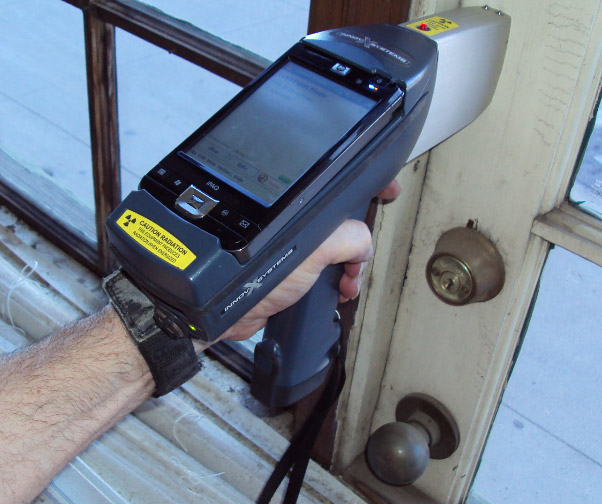Step-by-Step Refine for Effective Lead Violation Remediation
Attending to lead violations requires a meticulous and organized method to guarantee both safety and regulatory compliance. The journey begins with the precise detection and assessment of contamination sources, making use of cutting-edge analysis devices. Following this, adherence to government and state policies is vital to developing an efficient remediation strategy. Such a strategy should detail the specific approaches and timelines for activity. The real remediation requires experienced workers to execute these strategies while strictly complying with safety protocols. But what takes place after the removal is finished? The response hinges on recognizing the essential post-remediation approaches that make certain long-term safety and security and area well-being.

Detection and Evaluation
Discovery and evaluation are crucial action in the removal of lead offenses. To guarantee a reliable remediation process, it is vital to carry out an extensive exam of the environment where prospective lead direct exposure exists. The preliminary stage of detection includes recognizing sources of lead contamination, which can be found in paint, pipes, dirt, and dust. Using innovative diagnostic tools such as X-ray fluorescence (XRF) analyzers and atomic absorption spectroscopy (AAS) can provide specific measurements of lead focus.
This includes reviewing the level and extent of contamination, as well as recognizing populaces at danger, particularly kids and expecting women. The collected information must be carefully recorded to support the growth of a reliable removal technique.
Furthermore, it is vital to focus on locations with the greatest degrees of contamination and those that posture the best health risks. Reliable interaction with stakeholders, including residential property owners, residents, and public health authorities, is important for ensuring that all events are notified about the findings and the succeeding actions required for removal. This preliminary discovery and analysis stage prepares for an effective lead violation removal process.

Legal and Governing Conformity
Browsing the landscape of legal and regulative conformity is a critical facet of successful lead infraction removal. Compliance makes sure not just the safety of damaged populations however additionally the reliability and lawful standing of the company accountable for removal.
This entails meticulous documentation of all remediation tasks to show compliance. Failure to stick to these policies can result in severe charges, including hefty penalties, legal activity, and reputational damages.
Involving legal specialists concentrated on ecological regulation can promote browsing these complexities. Regular training and qualification for all workers associated with the removal process are also mandatory to make certain adherence to security and regulatory requirements. By prioritizing legal and governing conformity, organizations can properly reduce dangers and accomplish an effective remediation outcome.
Preparation the Remediation
Properly planning the remediation of lead offenses begins with a complete analysis of the contaminated site. This data-driven strategy ensures that remediation efforts are suitably targeted and efficient.
Once the contamination is mapped, a danger analysis should be conducted to evaluate prospective wellness threats to humans and the atmosphere. Lead Violation Removal in NYC. This evaluation must consider aspects such as direct exposure paths, populace susceptability, and ecological influences. The insights gathered will develop the basis for choosing a proper removal technique
Ultimately, establishing clear, possible purposes for the removal project is vital. These purposes need to straighten with governing criteria and stakeholder assumptions to guarantee compliance and community acceptance. Developing a detailed remediation strategy that outlines methods, timelines, and resource appropriation will certainly promote an organized strategy to the cleaning procedure.
In addition, it is important to engage with stakeholders early and keep transparent communication throughout the planning phase. This consists of notifying regional communities, obtaining required permits, and collaborating with governing companies to guarantee all legal and procedural needs are fulfilled. A well-crafted remediation plan not just attends to the contamination efficiently but also constructs depend on and collaboration amongst all celebrations involved.
Performing the Removal
With a well-structured removal plan in position, the focus changes to the actual implementation of the remediation tasks. This phase entails activating the necessary sources, consisting of competent employees, specific tools, and top notch materials. Begin by plainly defining roles and responsibilities to make certain liability and seamless coordination amongst team participants.
The initial action in implementation is to protect the site. This consists of setting up containment locations to avoid lead dirt and particles from spreading, along with employing air filtering systems to keep air top quality. Next, wage the elimination of lead-based products. Utilize techniques such as wet scuffing, chemical stripping, or encapsulation, depending on the intensity and area of the contamination. It is crucial to stick to safety procedures, consisting of the use of my response personal protective devices (PPE) and correct disposal of harmful materials.
Throughout the removal process, conduct periodic inspections and air quality checking to guarantee conformity with regulatory requirements. Efficient interaction with stakeholders, including residential or commercial property owners and occupants, is important to maintain them notified of development and any type of unanticipated growths. By diligently complying with these actions, the remediation tasks can be implemented successfully and properly, ultimately mitigating lead hazards.
Post-Remediation Strategies
Post-remediation techniques play an essential duty in guaranteeing the long-term success of lead offense removal efforts. These strategies encompass recurring surveillance, maintenance, and area education to stop future lead exposure and make certain a safe environment.
First, normal monitoring is necessary. This entails periodic screening of the previously influenced areas to make sure that lead levels remain within safe limitations. Homeowner ought to develop a routine for these examinations, preferably in partnership with certified ecological specialists.

Third, educating the page community plays a critical duty in sustaining the advantages of removal. Citizens and building managers need to be informed about the threats of lead exposure and the most effective methods for preserving a lead-safe atmosphere. Workshops, educational pamphlets, and community meetings can be reliable tools for distributing this information.
Final Thought
Effective lead offense remediation needs an extensive, systematic technique encompassing detection and assessment of contamination, adherence to legal and governing standards, thorough planning, and reliable implementation of removal efforts. Post-remediation methods, including constant surveillance and community education and learning, are important to maintain a lead-safe atmosphere. Collaboration with environmental experts makes certain continuous conformity and defense of public wellness. This methodical procedure underscores the relevance of thoroughness and look at this web-site caution in resolving and minimizing lead contamination.